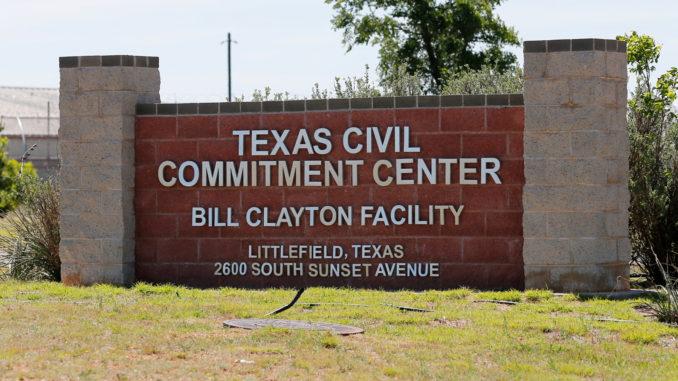The Endless Punishment of Civil Commitment
Prosecutors can subject those convicted of sexual offenses—and sometimes, those with no conviction at all—to an indefinite period of civil punishment at the end of their criminal sentence.

In January, Los Angeles County Superior Court Judge James Bianco ruled that after spending nearly two decades detained by the state of California without trial, George Vasquez was a free man.
Unlike the 536,000 people held pretrial in the criminal justice system in America, Vasquez, 44, was not being held because he was accused of a crime.
Instead, Vasquez was locked up for 17 years out of fear that he might commit a crime.
Shortly before Vasquez was released after six years in prison for sex crimes in 2000, California prosecutors invoked a little-known, lesser-understood practice called civil commitment.
Used in at least twenty states, civil commitment allows a prosecutor to subject those convicted of sexual offenses (and sometimes, those with no conviction at all) to an indefinite period of civil punishment at the end of their criminal sentence. Civil commitment can mean years of additional detention under the guise of psychiatric treatment meant to reduce a person’s risk of committing another crime, with an often-illusory promise of freedom.
Statutes that constrain the power of authorities to civilly commit people who have served their sentences are broad and ambiguous. For example, the Kansas statute targets “any person who has been convicted of or charged with a sexually violent offense and who suffers from a mental abnormality or personality disorder that makes the person likely to engage in repeat acts of sexual violence.” Standards of proof are often lower than in the criminal system, and judges who decide these cases often side with prosecutors. While civil commitment is supposed to be reserved for people who are likely to commit additional offenses, a research study from a commitment facility in California suggests that rates of reoffending are far lower than would be believed—potentially imperiling the justification for civil commitment itself.
Through open records requests, The Appeal obtained and reviewed documents that showed the number of people held on similar “probable cause” grounds and found that cases like Vasquez’s were not rare. In California, there were 345 people trapped in civil, “pretrial” detention for more than three years. More than a quarter of those have been held without trial since 2006 or earlier. In Florida, meanwhile, 89 of the 489 detainees at their civil commitment center are pretrial. Fourteen have been held for more than a decade; five for nearly 20 years. In Washington State, Jesse McReynolds spent nine years civilly detained on McNeil Island without trial before a judge ordered his release. Records from the Washington State Department of Social and Health Services indicate that McReynolds’s case was also not an anomaly, and that multiple people have been civilly detained pending trial, sometimes for decades.
Civil commitment centers are also often the targets of civil rights lawsuits. McNeil Island detainees are embroiled in a lawsuit alleging that the drinking water provided to them is unfit for consumption and has resulted in unexplained deaths and high cancer rates at the facility. A trial on their claims is set for next year. In Texas’s for-profit civil commitment facility, there are a host of reported problems, including medical care. A recent Journal News report outlined many problems in New York’s civil commitment facility that are much like those in the nation’s jails and prisons: rapes, beatings, illicit drug use.
Like the the prison and jail system, which generally enjoys little scrutiny and broad immunity for its actions, civil commitment facilities exist largely outside of meaningful mechanisms for judicial review and accountability.
In 2017, the Supreme Court declined the opportunity to hear a challenge to Minnesota’s civil commitment facility which was brought by group of residents alleging that their detention violated their constitutional rights. In the facility’s over 20 years of operation, it had fully released only one person. While a federal trial court found that the commitment program was unconstitutional, the Eighth Circuit Court of Appeals reversed the decision and, in doing so, applied a legal standard that essentially foreclosed any finding of unlawfulness. The Supreme Court denied the petition for review, leaving the Eighth Circuit opinion in place, and thus left little doubt of the wide discretion afforded government officials who run such programs.
Back in Los Angeles, county prosecutors filed an appeal to keep George Vasquez detained. The 2nd District Court of Appeal heard oral arguments in Vasquez’s case on July 17, and a final decision is expected sometime this year. But Vasquez is just one of hundreds of people in California-and across the country who, despite having done their time, still await their day in court.
